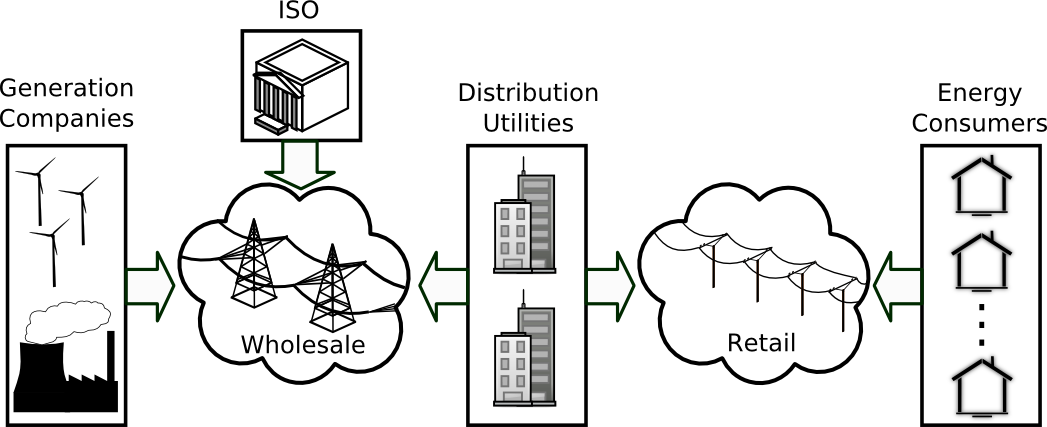Subprojects
Aggregator-Level Demand Response Mechanisms:A demand response aggregator, who may be a utility or a third-party company, needs to deal with a large set of self-interested, heterogeneous, but interdependent market players. The goal of this part of our project is to make demand response – either through direct load control/scheduling or dynamic electricity pricing – effective for the aggregators. |
|
| Dynamic PricingDynamic pricing can help supply and demand work together, to lower system operating costs and improve reliability. Our goal is to design dynamic pricing schemes that are effective and people-centric. That is, consumers should have the incentive to reduce consumption when supply costs are high, but they should also be protected–as much as possible–from higher bills and volatile prices. |  |
| Load Curtailment SchedulingA smart grid operator can use load curtailments reactively for adaptation to the loss of generation capacity (e.g., with unpredictable renewable energy sources), or proactively for profit maximization by avoiding the use of expensive energy sources during peak hours. In this work, we optimize operator profits for the different cases of load curtailment. We also investigate the requirements imposed by different cases of the load curtailment on the cyber infrastructure. |  |
End User Technologies:To make demand response appealing for end users, there should be low-cost and user-friendly solutions to help end users understand and control their electricity usage. The goal of this part of our project is to create such enabling technologies for end users. |
|
| Fine-Grained Energy Monitoring SolutionsWe have invented multiple complementary solutions to provide end users with fine-grained electricity usage information in low-cost and easy-to-install ways, including: 1) Supero, which uses multi-model sensors to estimate the states for home appliances with distinguishable physical signals, like light and sound; 2) Harmonic-Sense, which uses a single mote hosting a current transducer to estimate the states for home appliances with distinguishable harmonic patterns in current waveform; and 3) a noninvasive sub-metering solution that uses an Anisotropic Magnetoresistive (AMR) sensor array to estimate the current readings of each branch in an electricity distribution panel. |
 |
| ADSC Living Lab
We have converted our ADSC office in Fusionopolis to be a living lab! In particular, we are using a variety of sensors to monitor the office space, people, appliances, and their energy consumptions. The data gathered are centrally analysed and processed, and are available for trending analysis and future planning purposes. In the process of setting up this living lab, we have developed enabling technologies to achieve more efficient and accurate electricity consumption monitoring, auditing, and learning. We are also investigating technologies that can make occupancy sensing more efficient and accurate. |
 |